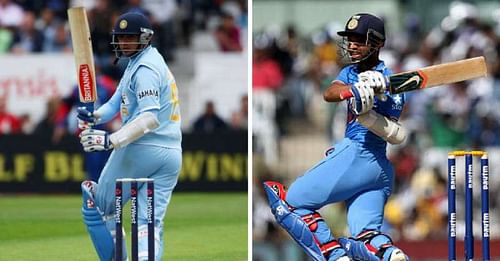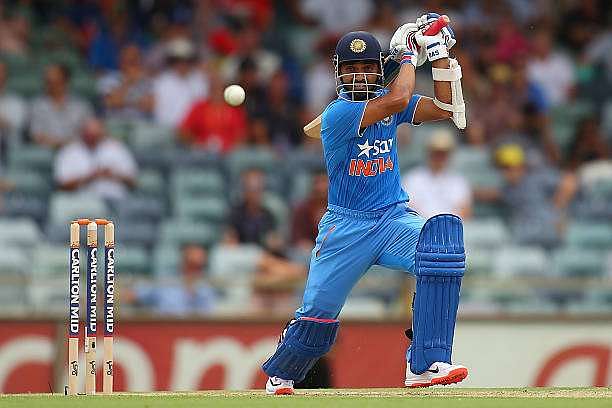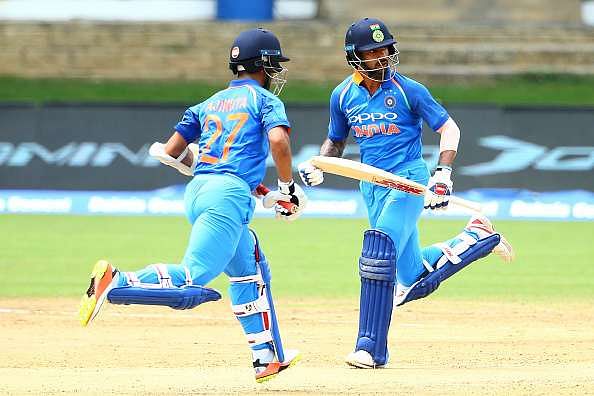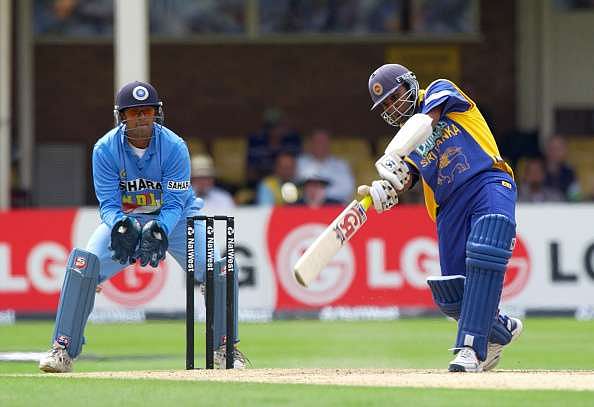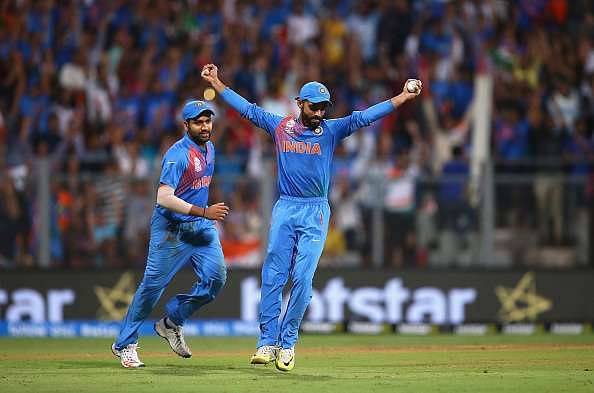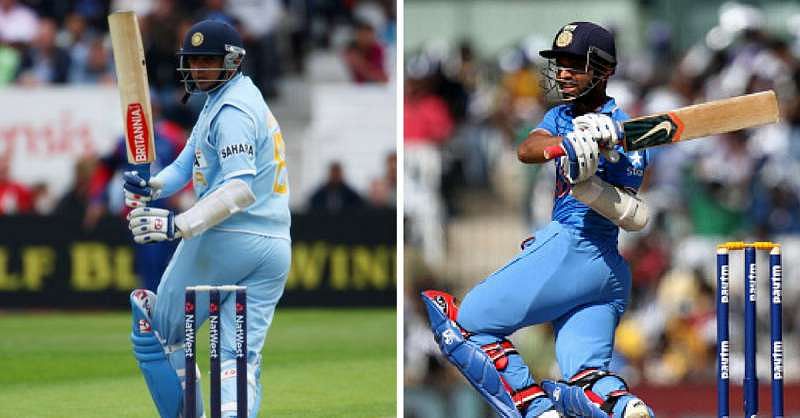
Ajinkya Rahane, Rahul Dravid, and the curse of being textbook-perfect
“What’s happening now is what happened before, and often what’s going to happen again sometime or other.”
- Orson Welles
May 25, 1998: A young Rahul Dravid has just come out to bat against a mellow and mediocre Bangladesh bowling attack. The man from Bangalore has already proven himself in Test cricket, but big question marks loom over his ability in the shorter format of the game. Dravid ends up scoring 1 run off 21 deliveries, before Mohammad Rafique puts an end to his misery by sending him back to the pavilion.
The questions marks embolden. The apprehension deepens.
The popular opinion amongst most Indian fans and experts is something like this, “He isn’t good enough for ODI cricket. He’s slow, his strike rate is miserable and he’s just incapable of rotating the strike in the middle overs. He’s a good bloke, but is suitable only for Test cricket.”
Dravid ended his career with 10,889 ODI runs, with just six batsmen above him in the list of highest run-scorers of 50-over cricket.
June 25, 2017: Ajinkya Rahane, Dravid’s protege, takes guard against an inexperienced West Indies bowling attack, after being put in to bat by Jason Holder. He got a decent half-century in the last innings, but doubts over his ability in this format are palpable.
The Indian fans and experts think, “He isn’t good enough for ODI cricket. He’s slow, his strike rate is miserable and he’s just incapable of rotating the strike in the middle overs. He’s a good bloke, but is suitable only for Test cricket.”
Rahane cuts, flicks, drives and pulls to his third ODI century. The run-a-ball strategy(?) finally seems to have worked for the man from Mumbai, as he takes off his helmet and thanks the skies for his magnificent knock. It seems pretty understandable: he couldn’t have played that well just on his own, could he?
The textbook perfection
Rahane reaches his hundred with a magnificent cover drive that moves your soul more than the fielders’; there’s the still head, the ideal follow-through, the pristine bat-flow and the unmistakable thud of the ball hitting the middle of the bat. It looked like a coaching manual brought to life, asked to materialise its verbose sentences into substance and form.
That single cover drive reminds you of the innumerable strokes by Dravid over 16 years of his career, and you wonder if there can be anything better than watching orthodox, classical cricket shots weaving magic on a cricket ground.
However, the problem with textbook perfection is exactly that: it comes from a textbook!
It can be learnt, understood and eventually overpowered. The batsmen read the coaching manual, but so do the bowlers. They set their fields to repress your classical strength, and bowl their balls to crack open your orthodox weaknesses. Textbook perfection might look otherworldly in that one ball, but is excruciatingly predictable almost every other time.
Innovation and improvisation, therefore, are not mere enhancement to a batsman’s game anymore: they form the crux of his being.
Innovation and improvisation
Dravid not only had to compete with contemporaries like VVS Laxman for his ODI spot, but with an assortment of talented young players like Yuvraj Singh, Mohammad Kaif and Parthiv Patel. He was never meant to sustain in limited overs cricket, let alone thrive in its glory. His shots, that would look divine off the bat, would always go into the expecting hands of a perfectly positioned fielder. His drives, so pleasing to the eye, couldn’t make it past the 30-yard circle.
However, he found a way through the unyielding ruckus.
He incorporated new shots to his arsenal, used them to keep the scorers troubled, and added an occasional sweep to the mix. What was created was a blend of innovation coupled with the basics, that became his bread and butter in ODI cricket. It led him to 12 centuries and 83 half-centuries in the format.
Extra cover: 5 Indian stars who might not play in the 2019 World Cup
Rahane’s innings yesterday, and in the first ODI, showcased significant improvement from his past (unsuccessful) few stint in limited overs cricket. He adopted the run-a-ball strategy from the very first ball, and bubble of ‘tick-the-scoreboard’ pressure that always seems to be surrounding him was suddenly begging for air.
He also wasn’t a run-of-the-mill athlete between the wickets yesterday (a trait, he will be glad, he hasn’t taken from Dravid). He took charge, sprinted hard and strived to convert ones into twos throughout his scuffle-free and straight-forward innings.
This proactive approach to running between the wickets earned him an applause from the captain, who was batting with his usual supremacy at the other end.
Rahane, who is considered to be India’s make-it-or-break-it liability after the 25th over of the match, hit a six off the third ball of the 26th over yesterday. Then, he hit a four off the very next delivery.
The horrible flat-batted, horizontal, tennis-cross court-forehand cum baseball-heave shots that he tries in the middle of the innings were reduced to bare-minimum in the match. He struggled a tad bit when he trudged from 82 off 77 balls to 97 off 101 balls, but that divine cover drive washed those moments right off.
The 29-year-old looked different under the clouds hovering over the Port of Spain yesterday.
He looked confident. He looked determined. He looked ready.
The double role lead-up
Dravid’s ODI career would’ve toppled into a tailspin had he not got his hands around (and into) the wicket-keeping gloves. The fact that he could readily turn from a batsman in one innings to a man who stood behind the wickets in another gave Sourav Ganguly an extra spot to experiment with in the ICC World Cup 2003.
Dravid batted at no. 6 through the tournament. It removed the microscope from his place in the side, thereby taking pressure off his batting, which was thrived away from the limelight. But really, when has that not happened in his case?
Yesterday, after the match, Virat Kohli said in the post-match press conference, "It all depends on who are the guys who can do two jobs in the team, there are very few guys who can open and play in the middle order and I think Ajinkya is one of them. In the future, we see him providing more balance to us as a side in terms of taking an extra bowling option maybe.”
Extra cover: 5 players who can replace Yuvraj Singh in the Indian ODI team ahead of 2019 World Cup
Dravid is the only cricketer with two 300-plus partnerships in ODI cricket: one with Ganguly, one with Sachin Tendulkar. Rahane now has three consecutive 100-run stands and six consecutive 50-run stands with Shikhar Dhawan.
Fiery Ganguly needed the calm of Dravid to provide a semblance of sanity in the boisterous Indian batting line up. Will Kohli’s aggression find an ally in Rahane’s tranquillity as well?
The conclusion
One thing that advocates Rahane's case is his excellent fielding ability, that comes from the Ponting-school of diving. He makes for a brilliant ‘catch’ in the slips, the 30-yard-circle, or the outfield, and his direct hits are second only to Ravindra Jadeja on the field.
However, the problems that circulate Rahane’s ODI career are far from being solved; the right-handed batsman has been tried and tested in the middle order of the innings, and those tests have not yielded positive results. He might have a promising future as an opener, where he would get enough time to build his innings, but India already have two world-class batsmen at the No. 1 and No. 2 spots.
Moreover, with Kohli coming in at number 3, India need a pelter who will take the attack to the opposition as soon as he comes out to the centre. Kohli takes his time to settle in, and both Rohit Sharma and Dhawan give him the freedom to do so.
How will Rahane fit in then?
Dravid’s future in the ODI side looked bleak for a long time before he and his captain found a way of turning him into an asset in the playing XI. Can Kohli do the same for Dravid’s former Rajasthan Royals’ teammate?
Comparison between two players from two different generations do not make sense almost always: they end up putting pressure on one of the two, while undermining the legacy of the other. Dravid and Rahane come from two intrinsically diverse eras of world cricket, and weighing one’s career against another tethers on the edge of incoherence.
However, this might just be one of the few instances when it does not cross-over to the other side.
Only two Indian openers have scored a century in the West Indies against the West Indies, by the way. They are:
Rahul Dravid in 2006
Ajinkya Rahane in 2017
